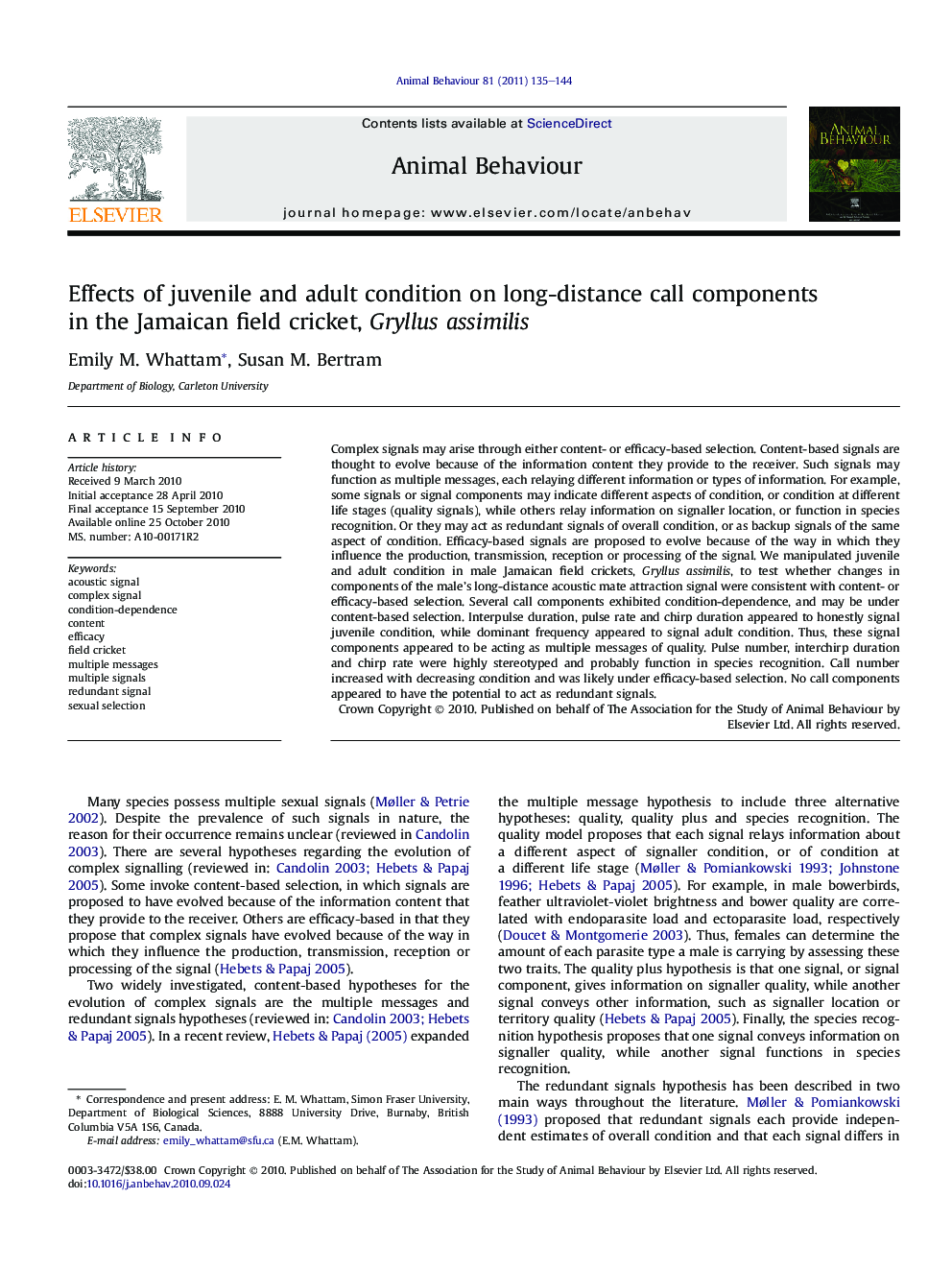| Article ID | Journal | Published Year | Pages | File Type |
|---|---|---|---|---|
| 10971039 | Animal Behaviour | 2011 | 10 Pages |
Abstract
Complex signals may arise through either content- or efficacy-based selection. Content-based signals are thought to evolve because of the information content they provide to the receiver. Such signals may function as multiple messages, each relaying different information or types of information. For example, some signals or signal components may indicate different aspects of condition, or condition at different life stages (quality signals), while others relay information on signaller location, or function in species recognition. Or they may act as redundant signals of overall condition, or as backup signals of the same aspect of condition. Efficacy-based signals are proposed to evolve because of the way in which they influence the production, transmission, reception or processing of the signal. We manipulated juvenile and adult condition in male Jamaican field crickets, Gryllus assimilis, to test whether changes in components of the male's long-distance acoustic mate attraction signal were consistent with content- or efficacy-based selection. Several call components exhibited condition-dependence, and may be under content-based selection. Interpulse duration, pulse rate and chirp duration appeared to honestly signal juvenile condition, while dominant frequency appeared to signal adult condition. Thus, these signal components appeared to be acting as multiple messages of quality. Pulse number, interchirp duration and chirp rate were highly stereotyped and probably function in species recognition. Call number increased with decreasing condition and was likely under efficacy-based selection. No call components appeared to have the potential to act as redundant signals.
Keywords
Related Topics
Life Sciences
Agricultural and Biological Sciences
Animal Science and Zoology
Authors
Emily M. Whattam, Susan M. Bertram,
